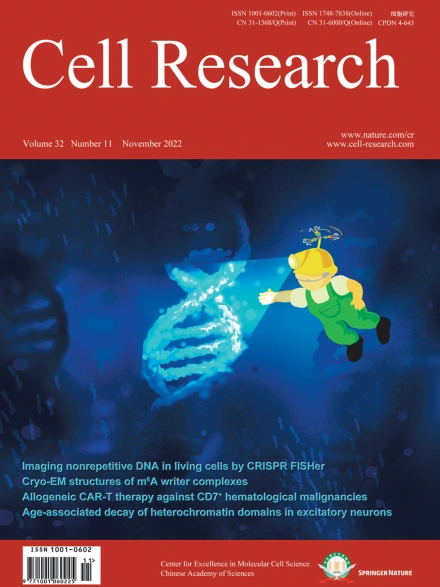
Advanced Search
Submit Manuscript
Advanced Search
Submit Manuscript
Volume 32, No 11, Nov 2022
ISSN: 1001-0602
EISSN: 1748-7838 2018
impact factor 17.848*
(Clarivate Analytics, 2019)
Volume 32 Issue 11, November 2022: 1008-1021
Single-cell epigenome analysis reveals age-associated decay of heterochromatin domains in excitatory neurons in the mouse brain
Yanxiao Zhang1,2,†,* , Maria Luisa Amaral3,† , Chenxu Zhu1 , Steven Francis Grieco4 , Xiaomeng Hou5 , Lin Lin5 , Justin Buchanan5 , Liqi Tong4 , Sebastian Preissl5,6 , Xiangmin Xu4,7,* , Bing Ren1,5,8,9,*
1Ludwig Institute for Cancer Research, La Jolla, CA, USALoss of heterochromatin has been implicated as a cause of pre-mature aging and age-associated decline in organ functions in mammals; however, the specific cell types and gene loci affected by this type of epigenetic change have remained unclear. To address this knowledge gap, we probed chromatin accessibility at single-cell resolution in the brains, hearts, skeletal muscles, and bone marrows from young, middle-aged, and old mice, and assessed age-associated changes at 353,126 candidate cis-regulatory elements (cCREs) across 32 major cell types. Unexpectedly, we detected increased chromatin accessibility within specific heterochromatin domains in old mouse excitatory neurons. The gain of chromatin accessibility at these genomic loci was accompanied by the cell-type-specific loss of heterochromatin and activation of LINE1 elements. Immunostaining further confirmed the loss of the heterochromatin mark H3K9me3 in the excitatory neurons but not in inhibitory neurons or glial cells. Our results reveal the cell-type-specific changes in chromatin landscapes in old mice and shed light on the scope of heterochromatin loss in mammalian aging.
https://doi.org/10.1038/s41422-022-00719-6